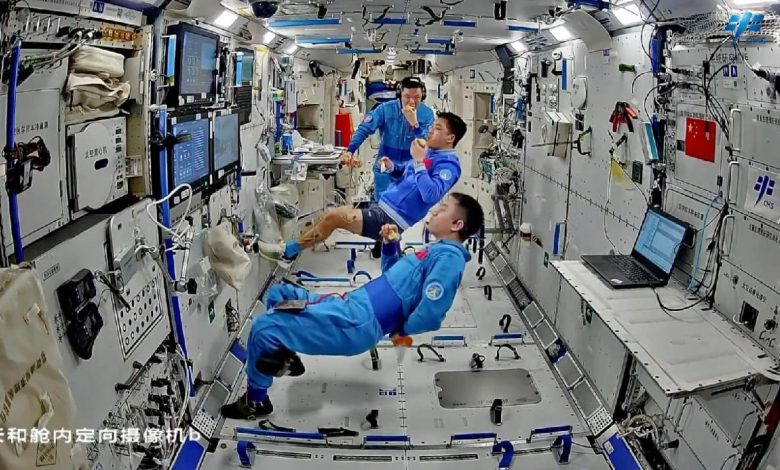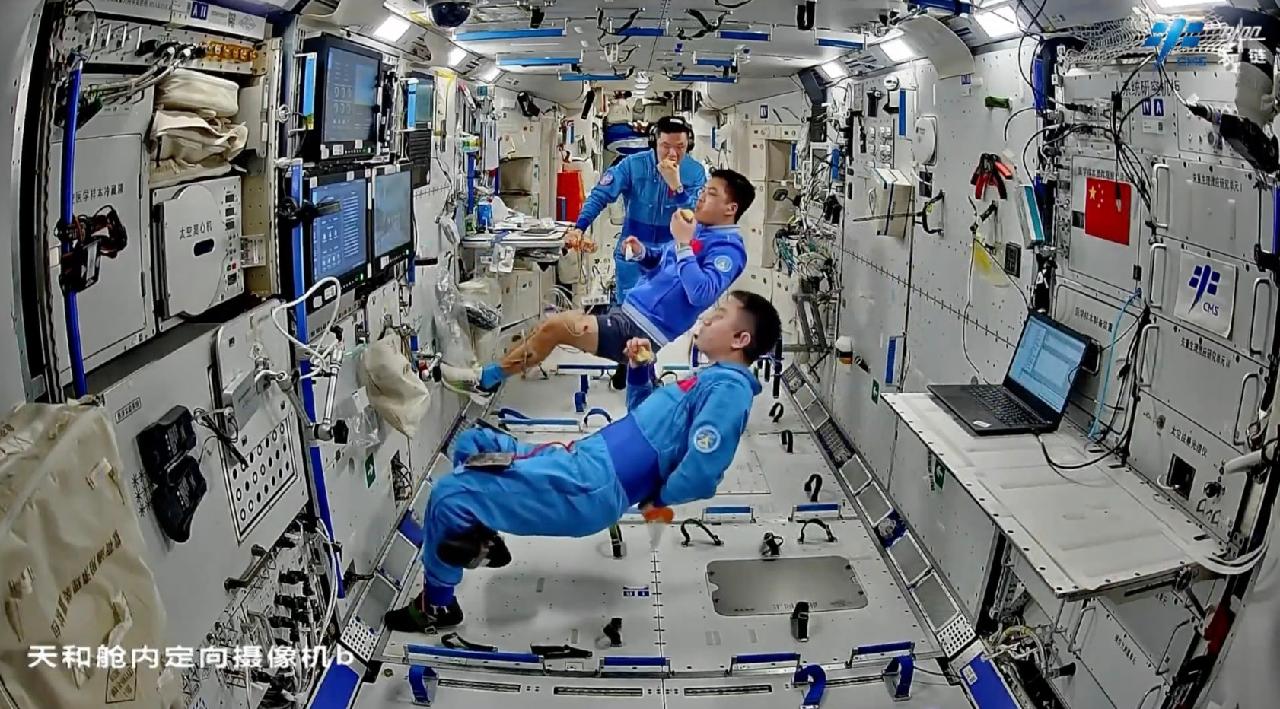China Space Station: How do Shenzhou-18 taikonauts stay healthy?


<img src='https://news.cgtn.com/news/2024-07-29/China-Space-Station-How-do-Shenzhou-18-taikonauts-stay-healthy–1vD5XpGLa7u/img/1f0544d9608a490584ab6fd6e16d30fe/1f0544d9608a490584ab6fd6e16d30fe.jpeg' alt='The Shenzhou-18 crew eat fruit in the China Space Station. /CMG'
The Shenzhou-18 crew aboard the China Space Station (CSS) are currently halfway through their six-month mission. To ensure their physical well-being in orbit, the three taikonauts have just completed a range of weightlessness protection experiments, according to the China Manned Space Agency (CMSA).
A significant challenge for taikonauts during space missions is adapting to the effects of weightlessness, as prolonged exposure to the space environment may lead to “space adaptation syndrome,” with bone loss being a key challenge.
To safeguard taikonauts’ health in zero-gravity conditions, Chinese researchers have developed a bone loss countermeasure device based on the principle of bone fluid flow vibration. By stimulating bone fluid flow through vibration in a weightless environment, this device triggers interactions between osteoblasts and osteoclasts, therefore effectively inhibiting bone loss.
<img src='https://news.cgtn.com/news/2024-07-29/China-Space-Station-How-do-Shenzhou-18-taikonauts-stay-healthy–1vD5XpGLa7u/img/ad05fb05468447af87f75f60ab006f14/ad05fb05468447af87f75f60ab006f14.jpeg' alt='A close-up of a Shenzhou-18 taikonaut taking bone loss countermeasure test in the China Space Station. /CMG'
In video footage released by the CMSA, the taikonauts are seen trying the device, placing it on the inner side of the midsection of their tibias. The high-frequency, low-amplitude, short-duration force loading stimulation enhances the activity of bone cells, increases the flow of nutrients within the bones and boosts osteoblast activity, ultimately aiming to increase bone mass.
Meanwhile, the crew have also conducted muscle adaptability experiments. Using ultrasound testing to measure Achilles tendon stiffness, along with muscle structure and function measurement devices and foot pressure collection equipment for lower limb kinematic and plantar pressure testing, they are monitoring changes in their muscle structure and functionality.
Through comparative analysis of human biomechanical characteristics before and after the mission, researchers can analyze the impact of long-term weightlessness and in-orbit exercise on lower limb biomechanical characteristics. Along with non-invasive muscle function tests done before, during and after the mission, and combined with in-orbit exercise data, they can analyze the dynamic changes in exercise adaptability under long-term spaceflight conditions.
<img src='https://news.cgtn.com/news/2024-07-29/China-Space-Station-How-do-Shenzhou-18-taikonauts-stay-healthy–1vD5XpGLa7u/img/9822ed39fb704fc3ae1c54f01ea77637/9822ed39fb704fc3ae1c54f01ea77637.jpeg' alt='The Shenzhou-18 crew use a nerve-muscle stimulation device for muscle atrophy prevention and muscle relaxation in the China Space Station. /CMG'
The taikonauts also use a nerve-muscle stimulation device for muscle atrophy prevention and muscle relaxation as prescribed. These experiments and devices are crucial for ensuring the skeletal and muscular health of the taikonauts during their stay in orbit.
China launched the Shenzhou-18 manned spaceship on April 25, sending Ye Guangfu, Li Cong, and Li Guangsu to its space station for a six-month mission. It is the third manned mission in the application and development stage of the CSS and the 32nd flight mission of China’s overall manned space program.

